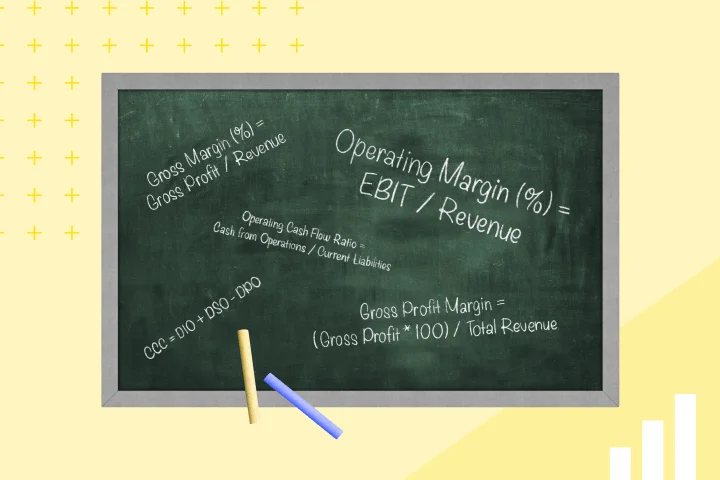Expense management software is a tool to help businesses track and analyze expenses. Traditional expense management processes are prone to problems and risks, like misplaced documents and human error. Plus, manually processing receipts and verifying documents wastes valuable time and resources. That’s why more and more companies are turning to software solutions to help them manage their expenses.
In this article, we’ll explain exactly what expense management software is and how it can benefit your business.
What Is Expense Management Software
Expense management software is a digital alternative to manual expense management. It streamlines the processing and reimbursement of employee-initiated expenses for things like travel and entertainment, as well as the company’s overall spend. It enables managers to pre-approve budgets, employees to track their expenses on the go, and finance teams to automate processing and reimbursements.
How Does Expense Management Software Work
Most expense management software is pretty straightforward. When an expense is entered into the system—either manually or via automated capture—it’s automatically approved or flagged based on pre-set parameters. If the expense is approved, a payment request is sent and the transaction is posted to the accounting system. This streamlines the accounting process and makes budgeting and forecasting much more accurate and effective.
Essential Features of Expense Management Software
Although all expense management software is different, there are some main features that most solutions include. Let’s explore some of them in more detail.
Automated Data Entry
Automated data entry uses specialized software to capture information from images of receipts. First, the receipt is scanned or photographed, usually on a smartphone. Then, optical character recognition (OCR) extracts data like the date, merchant name, amount, and items purchased.
This data is verified against pre-defined parameters, and any errors or discrepancies are highlighted. Finally, the data is posted to the accounting or expense reporting system.
The main benefit of this feature is that it makes manual data entry unnecessary, which saves time and increases accuracy. This also helps to ensure compliance with regulations and improves insights, since all expense data is gathered in one place. Plus, it’s more environmentally friendly than doing everything on paper.
Customizable Expense Categories and Reporting
The ability to customize expense categories allows users to view spending in a way that makes sense for their individual needs. It also improves spend tracking, making it easier to identify overspending and possible fraud.
Approval Workflows
Approval workflows help to ensure that all decisions and actions are reviewed and approved. This improves accountability, efficiency, transparency, decision-making, and compliance with expense policies and procedures.
Once a transaction is identified as needing approval, a request is automatically sent to the person responsible for approving it. They can then approve or deny it based on pre-defined criteria.
Integration With Accounting Software
Expense management software should integrate with your accounting system. If you still have to manually enter accounting information, you won’t reap the full benefits of the software.
Integration means that all expenses will be automatically imported and shared between the two systems. This increases speed and efficiency, allows for real-time reporting, and reduces the risk of human error.
Integration With Credit Cards and Bank Accounts
Automatic integration with credit cards and bank accounts allows for faster and more accurate reconciliation. This eliminates the need to manually reconcile expenses with accounts at the end of each period, and makes it easier to spot potential issues.
Mobile App
A mobile app allows employees to submit expenses on the spot, rather than saving up and submitting a bunch of receipts at once. This speeds up reporting, approval, and reimbursement. It also reduces the risk of lost or missing receipts, since they’re immediately entered into the system.
Data Analytics and Reporting
Data analytics and reporting provide valuable insights that can help you find opportunities for improvement and identify fraudulent or unauthorized expenses. The best expense management software has customizable reporting, which lets you generate custom reports to gain specific insights.
Budget and Spending Controls
If you’re able to set a budget within the system, potential overages can be noted and dealt with before they lead to bigger problems. The ability to set spending limits per category or employee also helps you to stay on budget and avoid frivolous spending.
For example, if the software shows an employee that they can only spend $50 a day on meals during a trip, they’re less likely to exceed this limit. And if they do need to spend more, they can request approval in advance.
How Can Expense Management Software Benefit Your Business
Expense reporting, approval, and reimbursement can be time-consuming and expensive. Automating these tasks can help companies save a ton of time and money. On the whole, expense management is shifting toward models that improve quality, efficiency, and productivity. Here are some of the biggest benefits of implementing this software.
- Save time and effort. Reducing the number of manual tasks will make your employees’ lives easier and your processes more efficient.
- Integrate your systems. Integrating expense management with accounting, credit cards, and more will simplify financial operations and promote accuracy.
- Get reliable real-time data. Managing expenses in real time leads to better insights and more informed decision-making.
- Cut processing costs. Studies have shown that shifting from spreadsheets to automated solutions can reduce processing costs by up to 50%.
- Increase compliance. Up to 15% of approvals by managers are based on out-of-date policies. Expense management software lets you identify and deal with non-compliant spending before it causes damage.
- Personalize the process. The ability to customize required fields helps to ensure that the system always has the most important information on every expense.
How to Choose the Best Expense Management Software
There are plenty of expense management software solutions out there—so how do you choose the right one for your business? Here are a few of the main factors to consider as you compare different options.
Company Size
The needs of small- and medium-sized business are different from those of giant corporations—and this applies to expense management software as well. For example, larger companies might have more travel expenses or SaaS subscriptions to manage, or they might need more complex spend controls and integration capabilities.
Industry
Different industries also have different expense management needs. Consider whether employees are required to purchase a lot of materials and supplies, or if they have to travel often. Are there a lot of SaaS subscriptions and product licenses to manage? The answers will vary depending on the type of work your company does.
Features
Pay attention to the extra features that each option offers, and decide which ones are most important for your business. For example, you should check if the software includes a mobile app, customization options, personalized reporting, and advanced analytics.
Ease of Use
It’s vital for expense management software to be user-friendly and intuitive. If it’s difficult for you or your employees to use, you won’t get any of the benefits it promises—no matter how great it might look on paper.
Scalability
The software you choose should be able to grow with your business. If it’s not scalable, you’ll likely have to switch to a new system at some point, which is a costly and tedious process. Try to avoid this by selecting software that leaves plenty of room for growth.
Customer Support
You have to be able to get help when you need it. Check which support channels are offered (such as live chat, email, or phone) and read third-party reviews to see how helpful they actually are. You might even be able to test them out yourself.
Security
It’s crucial to evaluate the software’s security measures. This is especially important when it comes to integrations; you don’t want your credit cards and bank accounts to be vulnerable because of insufficient security in your expense management system.
Cost
It goes without saying that the solution you choose should be affordable. Be realistic about how much you can actually spend, and make sure your expense management software is well within your budget.
If you’re looking for more control over corporate spending, visibility into business transactions, and insights to optimize your future spend strategies, then Mesh Payments could be the right fit for you. We can help you streamline your expense processes while eliminating human error, risk, and unnecessary costs. Schedule a demo today.
FAQs
Receipt capture, expense categorization, approval workflows, policy enforcement, reporting, and integration with accounting systems.
By streamlining expense processes, identifying cost-saving opportunities, enforcing policies, and providing real-time insights for better financial decision-making.
Challenges include manual data entry errors, non-compliant spending, delayed approvals. Addressed through automation, policy enforcement, and real-time reporting.
It automates expense submission, categorization, and approval workflows, making it faster, more accurate, and reducing administrative burden.
Policy compliance ensures expenses align with company guidelines, prevents overspending, and maintains financial control.
Web-based/cloud-based solutions, mobile apps, and integrated ERP systems with expense management modules.
Customizable features, industry-specific configurations, and integrations with industry-specific tools cater to diverse requirements.
Factors include features, ease of use, scalability, security, customer support, and cost-effectiveness.
Cloud-based solutions offer greater flexibility and scalability, allowing easy access from anywhere and adapting to business growth.
Real-time reporting and data analytics provide insights into spending patterns, enabling informed financial decisions.
It allows employees to submit expenses digitally, automates approval workflows, and notifies approvers for faster processing.
Key features include mobile accessibility, receipt scanning, intuitive interface, automated approvals, policy enforcement, and integration capabilities.
By setting up pre-defined spending limits, policy checks, and automated approval processes to ensure adherence to company policies.
Integration streamlines data transfer, reduces manual errors, improves accuracy, and enables seamless financial reporting.
It centralizes expense data, generates real-time reports, and provides analytics to monitor spending patterns across the organization.
-
Get the latest blogs from Mesh by subscribing to our newsletter







